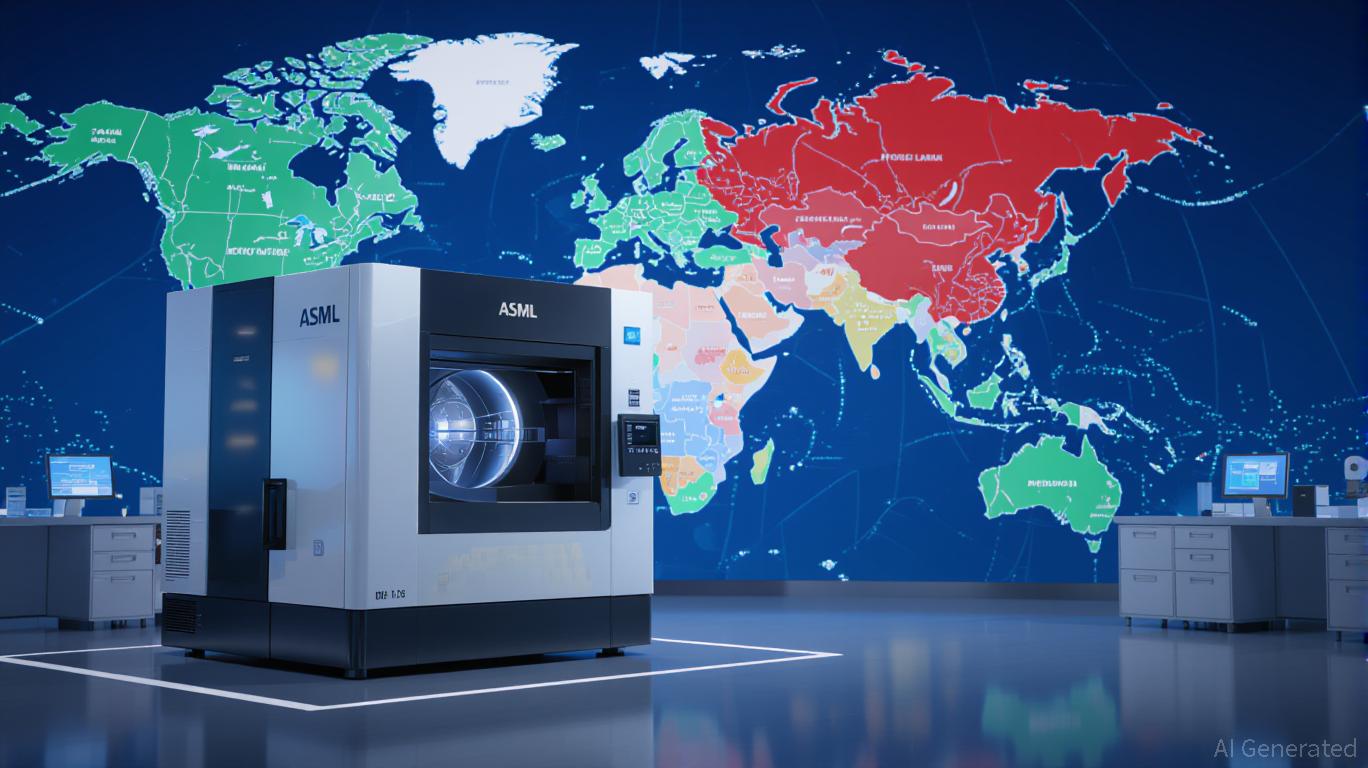ASML's Crossroads: Tariff Fears vs. AI-Driven Demand—Is This the Bottom?
The semiconductor equipment giant
(ASML) has become the poster child for both the explosive growth of AI-driven chip demand and the geopolitical minefield facing global tech supply chains. After its July 16 earnings report sent shares plunging 7.5%, investors are now asking: Is this a buying opportunity or a warning sign of a structural slowdown?The Near-Term Storm: Tariffs and Order Volatility
ASML's Q2 results were robust, with net sales hitting €7.69 billion (up 23% year-over-year) and EUV bookings soaring to €2.3 billion—both exceeding expectations. Yet the stock sold off as management warned of “high uncertainty” around 2026 growth due to U.S. tariffs and geopolitical risks. President Trump's proposed 30% tariffs on EU imports, effective August 1, could directly impact ASML's U.S. sales and indirectly disrupt global supply chains if retaliatory measures follow.
The company's decision to stop reporting quarterly order bookings starting in 2026 underscores the volatility of its demand cycle. While the EUV order backlog remains strong at €20 billion (a 41% Q/Q jump), ASML now faces a dilemma: Can it sustain growth if near-term orders are less predictable?
Valuation: A Discounted Leader or Overpriced for Risk?
ASML's valuation multiples have compressed recently. Its EV/EBITDA ratio fell to 25.7x in Q2 2025, below its five-year average of 28.6x and well under its 2021 peak of 40.4x. Meanwhile, its P/E ratio of 39.69 in 2024 remains above the 10-year average of 34.46 but has cooled from 2021's 49.23.
Comparisons to peers like
(LRCX) and (AMAT)—which trade at EV/EBITDA multiples of 18.7x and 15.6x, respectively—suggest ASML is still pricier. However, its unique position as the sole supplier of high-end EUV lithography systems justifies a premium.
The Bull Case: AI Demand and Long-Term Dominance
The argument for buying the dip hinges on AI's insatiable appetite for advanced chips. EUV lithography is essential for producing the 3nm and 2nm nodes required for AI accelerators, and ASML's backlog reflects this. Even if near-term orders slow due to tariffs, the long-term structural demand for AI chips remains intact.
CEO Christophe Fouquet emphasized that ASML's installed base of tools—now generating €2.1 billion in upgrades and services—provides a recurring revenue stream. This “moat” could buffer against macroeconomic dips.
The Bear Case: Geopolitical Gridlock and Margin Pressure
The risks are clear:
1. Tariff Uncertainty: If the U.S. imposes tariffs
2. Client Headwinds: Major customers like Samsung and face their own financial struggles, which could delay orders.
3. Supply Chain Fragility: Geopolitical fragmentation (e.g., China's restrictions on ASML exports) complicates global chip production.
Investment Thesis: A Selective Buy for Patient Investors
The selloff post-earnings likely overreacted to near-term tariff fears, creating an opportunity for investors with a 2-3 year horizon. Key reasons to consider dipping in:
- Valuation Discount: The current EV/EBITDA of 25.7x is reasonable given ASML's monopoly on EUV technology.
- Structural Demand: AI and high-performance computing are not fads—they require continuous upgrades to chip manufacturing.
- Order Backlog Resilience: The €20 billion EUV backlog suggests demand is still strong, even if visibility is clouded.
However, avoid if you're a short-term trader. Near-term volatility from tariff negotiations and macroeconomic data (e.g., consumer chip demand for smartphones/cars) could keep pressure on the stock.
Final Call: Buy on a Dip, But Set a Watch List
ASML is a hold at current levels, but look to add positions if shares drop below €600—far from today's €668 price. Pair this with a diversified semiconductor ETF (e.g., SOXX) to hedge against single-stock risk.
The ultimate test will come in late 2025/early 2026: If ASML's customers confirm orders through 2026 and tariff concerns ease, this dip could prove a generational buying opportunity. Until then, patience—and a long-term lens—are key.

Sign up for free to continue reading
By continuing, I agree to the
Market Data Terms of Service and Privacy Statement

Comments
No comments yet